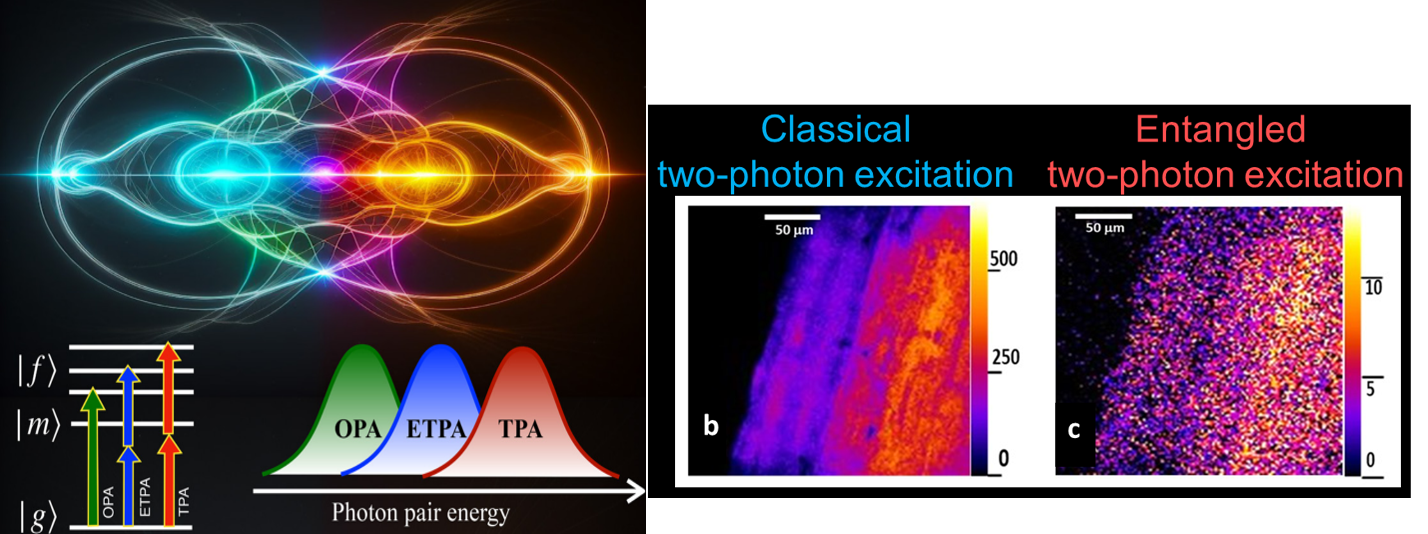Biological Imaging Using Entangled Photons
Authors:
Theodore Goodson III1* ([email protected], PI), George C. Schatz2, Jennifer Morrell-Falvey3, Ying-Zhong Ma3
Institutions:
1University of Michigan; 2Northwestern University; 3Oak Ridge National Laboratory
URLs:
Abstract
The organization and function of microbial communities in the plant rhizosphere are influenced by interactions among organisms within a complex and dynamic physical and chemical environment. This environment, which includes growing plants, microbial communities, complex metabolites, and nutrient gradients, cannot be characterized in a noninvasive and nondestructive manner using current bioimaging technologies. Imaging with quantum light offers the opportunity to realize long-term nondestructive imaging investigations of new species in the plant–microbial system.
In this talk, the reports of experiments with quantum light based on entangled two-photon absorption for specific probes will be discussed. In addition, group members describe new work concerning theoretical predictions of important cross-sections for the probes as well as the construction of a pump pulse- shaping setup for entangled photon generation and dispersion compensation.
Image

Two-Photon Absorption and Excitation. Left: Schematic representation of the entangled two-photon absorption peak with respect to the absorption peak position for classical two-photon absorption (TPA) and for one-photon resonant absorption (OPA). Right: The first entangled two-photon emission images of a plant root system. [Left: Republished with permission from Varnavski, O., et al., 2023. "Colors of Entagled Two-Photon Absorption," Proceedings of the National Academy of Sciences 120(35), e2307719120 under Creative Commons license (CC BY-NC-ND); Right: Courtesy University of Michigan]
